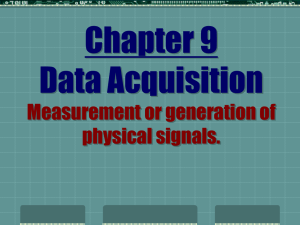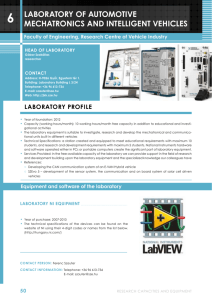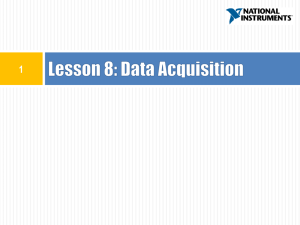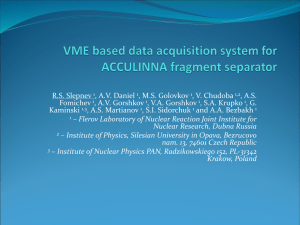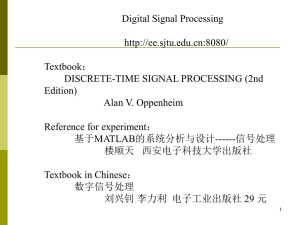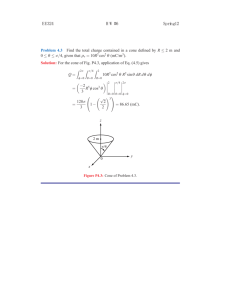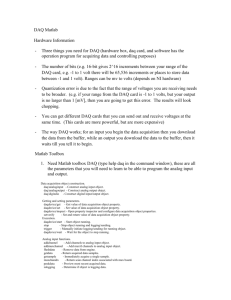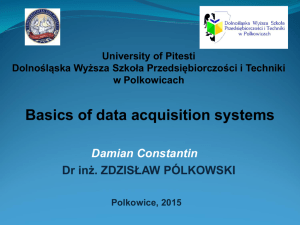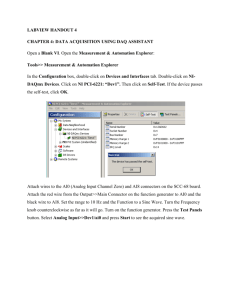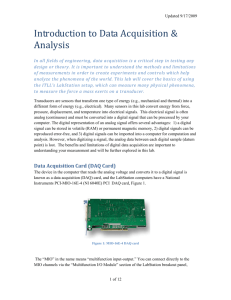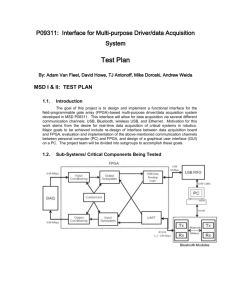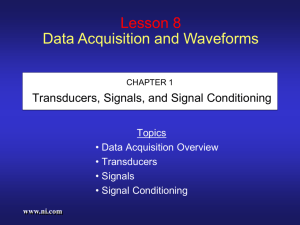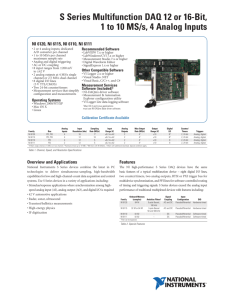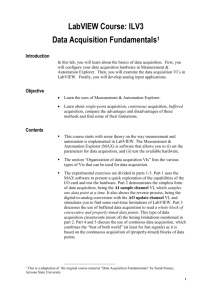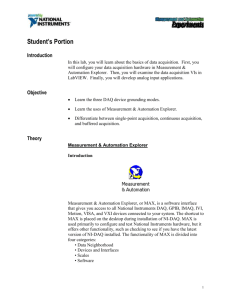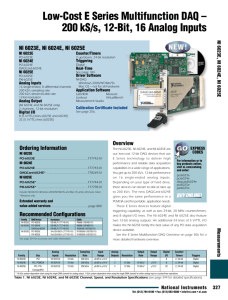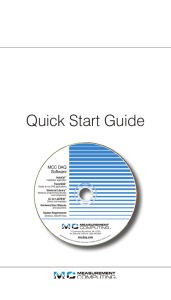Silicon Detectors and DAQ principles for a physics experiment
advertisement
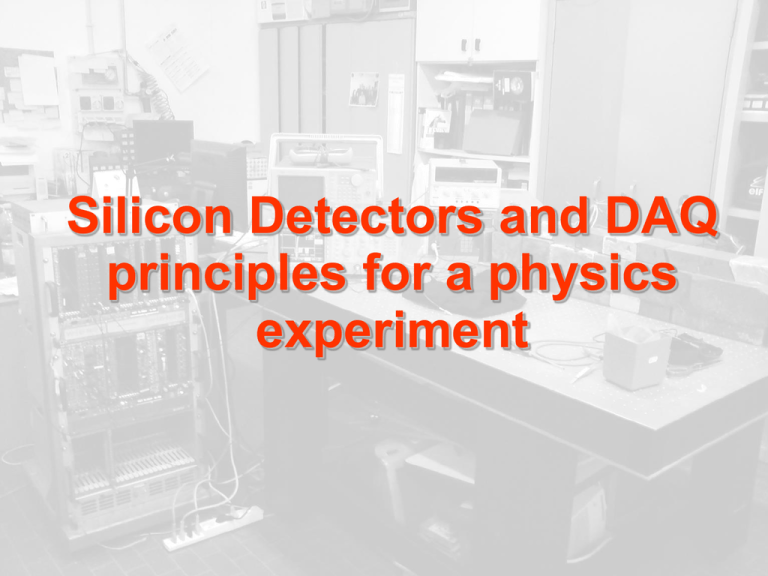
Silicon Detectors and DAQ principles for a physics experiment Telescopes Human eyes Microscope Accelerators Detectors But where does it all start from? Electronic properties of materials Atoms are made of proton, neutrons (nucleus) and electrons Valence and conduction electrons are responsible for the principal characteristics of different atoms Electronic properties of materials Everyone wants to be noble !!! Water is a good example…. Electronic properties of materials Atomic levels Molecular bands What happens then? If some electron is promoted in the conduction band, what may occur? 1) Drift: an external field can move these electrons 2) Multiplication; if the field is strong enough 3) Recombination: if nothing happens, electrons fall back to valence band How can we describe the situation? Physicians must be smart and clever…. h+ h+ h+ h+ holes !!! ....and do a smart use of drugs!!! n doping p doping Why ? p-n Junctions Non equilibrium situation Electrons and holes diffusion Donors and acceptors ions field plays against diffusion and equilibrium is reached Fermi level definition Equilibrium !!! … ? p-n Junctions Equilibrium is reached when the two Fermi levels are at the same energy A sort of slope is then created, hard to climb up and easy to roll down! Equilibrium does not mean immobility!!! p-n Junctions Breakdown voltage Vbr V=RxI Junctions are the basic devices for all semiconductor detectors! Particles through matter How can we detect them? Particles’ measurements A particle passes through a silicon thickness, generating e-h pairs e- and h+ are collected by anode and cathode (be aware of recombination…) An electric field causes electron flow through the device and created charge can be collected (by capacitor for ex.) SDD, a clever antirecombination device An electric field leads electrons, generated by particle flow (xRays or ionizing) to a small collector anode. At the same time holes are immediately removed from electron’s path by cathode strips. Position measurements: strips ! We got the charge... and now what? Analog – Digital conversion Digital signal; signal is a function of discrete numbers, F(N) Analog signal; signal is a function of continuous numbers, usually time, F(t) The world is analogic but Pc and analysis software can only work with digital informations….. Analog signal have to be converted to digital signals! Analog – Digital conversion Sampling Quantization Analog – Digital conversion channels Analog – Digital conversion In this world….. ….this is poker !!! Analog – Digital conversion Converting analog signals into digital signals, some information may be lost … but are they really necessary? From analog signals to files and histograms: Data AQuisition methods DAQ What are we interested in ? Which information can we get? Charge Timing Rates DAQ : Discriminators DAQ : QDC (charge to digital converter) QDC values (integer numbers) Histograms DAQ : TDC (time to digital converter) DAQ : Scaler 4 events in 10 seconds Rate = 0,4 Hz A real example! MPPC (Multi Pixel Photon Counters) detectors Each pixel acts like a p-n junction Breakdown current is used Output signals are summed MPPC (Multi Pixel Photon Counters) detectors MPPC Signal coming out from the detecor is then: QDC spectrum is then composed by several pixes with fixed distance Questions? New physicists? An experience in the lab: e charge estimation V R i Q i t Ohm law Current definition t1 Qtot i dt area t0 Charge definition b (time) h (Volt Ω) bh Q 2 V (20 5)m V t (25 5)ns V t 2 102 V 25109 s 12 Qtot 5 10 C 2 R 2 5 10 Qtot Qe Adet Apreamp Qtot 5 1012 19 Qe 1 , 3 10 C 5 Adet Apreamp 7,5 10 5 10 Is the result ok? errors….. t V 2 2 Q V t 2R 2R 2 2 V 5 103V t 5 109 s Q 1,6 10 C 12 19 Qe 1,3 10 C Huge errors due to the big error estimation on measured values of t and V Can you do it better ???
